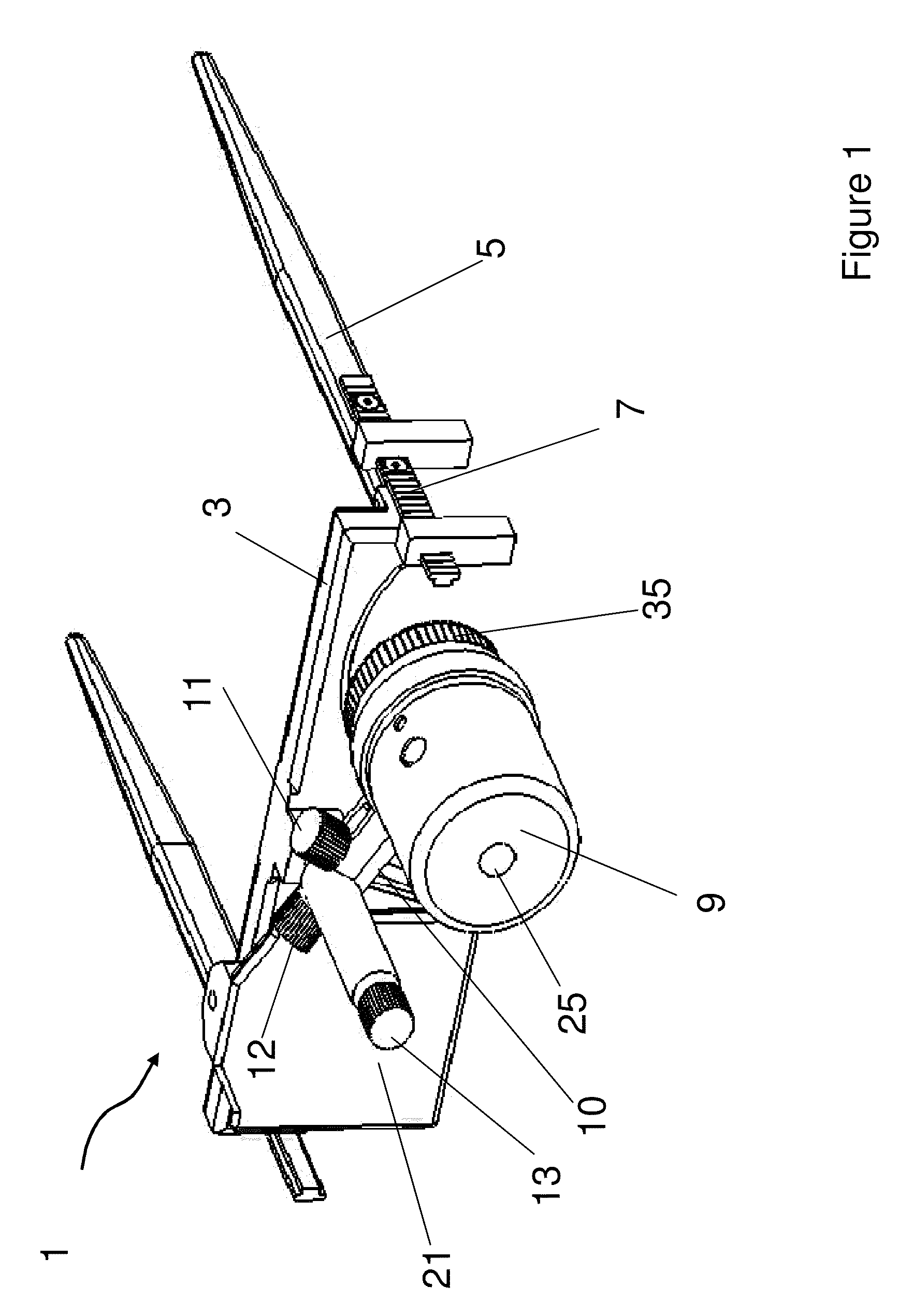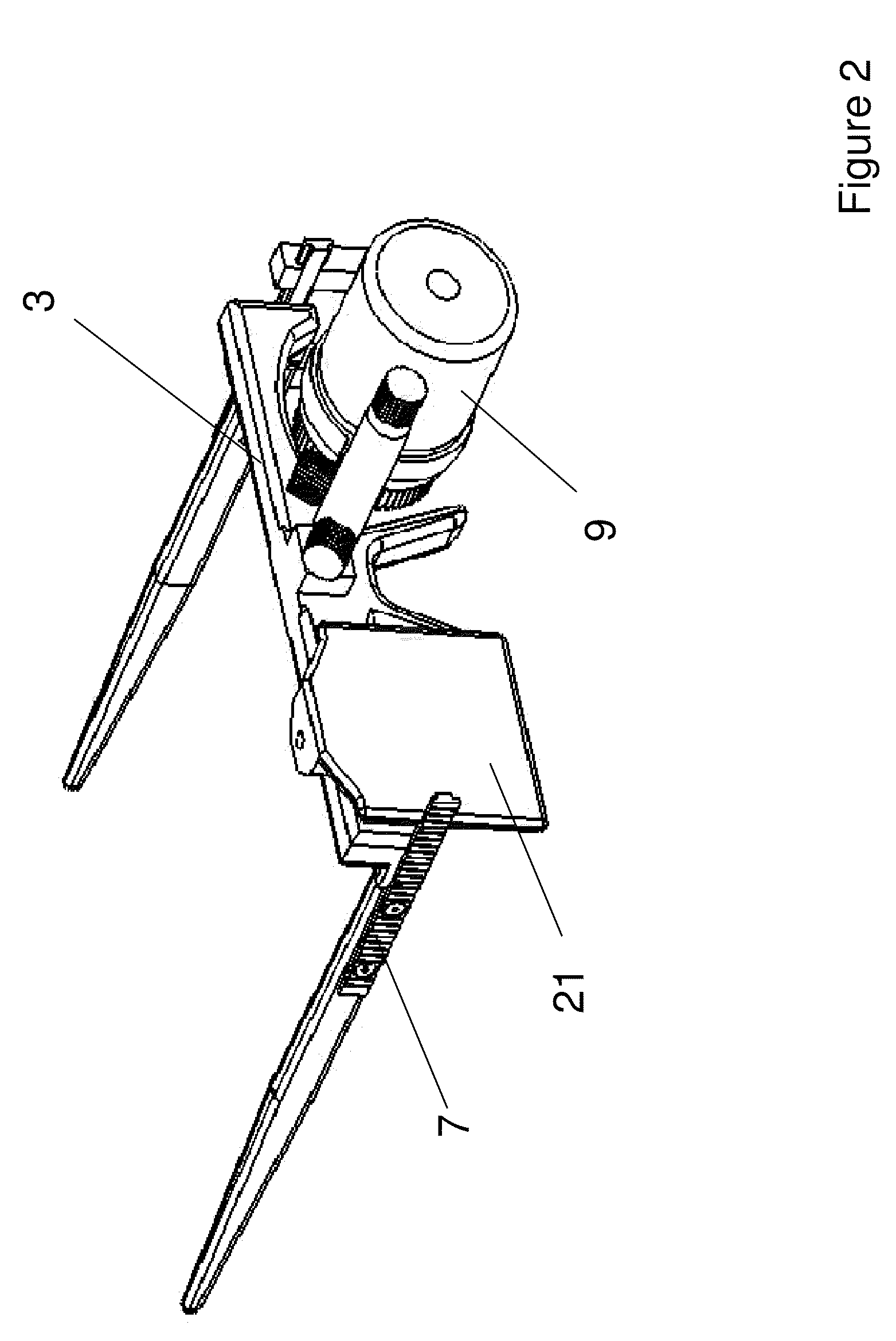Wearable photoactivator for ocular therapeutic applications and uses thereof
a technology of ocular therapy and photoactivator, which is applied in the field of wearable photoactivator for ocular therapy applications, can solve the problems of poor visual rehabilitation prospects and virtually useless systemic administration of anti-infective agents, and achieve the effect of convenient exchang
- Summary
- Abstract
- Description
- Claims
- Application Information
AI Technical Summary
Benefits of technology
Problems solved by technology
Method used
Image
Examples
example 1
Treatment of Corneal Infection Using UV-A Photoactive Therapeutic Agent and a Wearable Photoactivator
[0093]A patient presents with acanthamoebic keratitis in one eye. A lid speculum is used to hold the patient's eye open. The recumbent patient is fitted with a wearable photoactivator of the invention having a UV-A light source. The housing of the light source is adjusted to provide light over 3 to 10 mm spot size on the eye, depending on the area to be exposed, based on the extent of the infection. The fluence of the light is such that it warrants its absorption in the layers of the cornea before penetrating into other ocular structures, thereby reducing the exposure of other structures to the light. A dropper is inserted through an opening in the housing to apply riboflavin to the eye in the form of drops and the riboflavin solution concentration is in the range of about 0.1% to 5% to completely bathe the eye in riboflavin.
[0094]The riboflavin is instilled in the eye every 5 minute...
example 2
Treatment of Keratoconus Using UV-A Photoactive Therapeutic Agent and a Wearable Photoactivator
[0095]A patient presents with keratoconus in one eye. A lid speculum is used to hold the patient's eye open. The recumbent patient is fitted with a wearable photoactivator of the invention having a UV-A light source. The optical system for the light source is adjusted to provide light of 8-9 mm spot size on the eye. The fluence of the light is such that it warrants its absorption in the layers of the cornea before penetrating into other ocular structures. A dropper is inserted through an opening in the housing to apply riboflavin to the eye in the form of drops and the riboflavin solution concentration is in the range of 0.1% to 5% to completely bathe the eye in riboflavin.
[0096]The riboflavin is instilled in the eye every 5 minutes for 15 minutes in the form of eyedrops or soaked in a filter paper disc placed on the surface of the cornea to impregnate the sroma with the photochemical subs...
PUM
 Login to View More
Login to View More Abstract
Description
Claims
Application Information
 Login to View More
Login to View More - R&D
- Intellectual Property
- Life Sciences
- Materials
- Tech Scout
- Unparalleled Data Quality
- Higher Quality Content
- 60% Fewer Hallucinations
Browse by: Latest US Patents, China's latest patents, Technical Efficacy Thesaurus, Application Domain, Technology Topic, Popular Technical Reports.
© 2025 PatSnap. All rights reserved.Legal|Privacy policy|Modern Slavery Act Transparency Statement|Sitemap|About US| Contact US: help@patsnap.com



